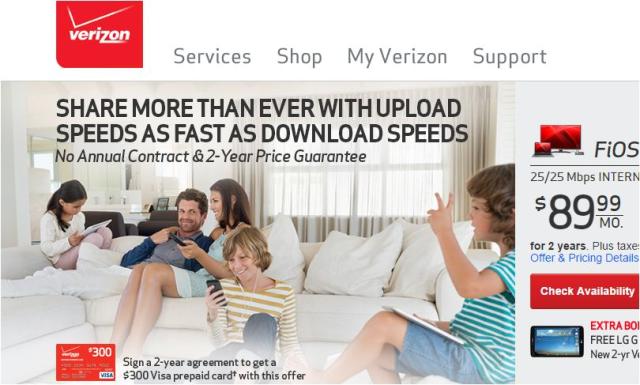
Steve Vachon, research analyst at TBR, says Verizon doubles down on advertising and media endeavors to offset decline in its traditional business.
ALSO READ: Verizon revenue dips 5.3% to $30.5 billion in Q2
Verizon endured a challenging quarter in Q2 2016 as consolidated revenue decreased year-to-year for the first quarter in over five years (even when excluding the Frontier divestiture) due to declines across its traditional lines of business. Verizon was also negatively impacted by the recent labor strikes, causing the company to lose net subscribers across all of its FiOS segments in Q2 2016.
Verizon was also unable to increase wireless revenue in the quarter as the bulk of Verizon’s postpaid net additions remain from lower-value tablets as the carrier is being outperformed in the phone segment by T-Mobile’s and Sprint’s more competitive offers. Verizon’s postpaid net additions in Q2 2016 comprised of 356,000 tablets and 86,000 net phone additions as the carrier’s smartphone additions were largely offset by basic phone subscriber losses.
A strong point for Verizon in Q2 2016 was that the company was able to boost wireless OIBDA margin by 360 basis points to 47.5 percent through its disciplined pricing strategies and move away from subsidized postpaid contracts. Verizon solidified that the company is more focused on preserving ARPU and profitability than gaining lower-value subscribers by raising the price points of its postpaid service plans in July.
Verizon is targeting higher-value customers who would rather pay for more expensive service plans to receive superior network coverage. Though Verizon will continue to trail T-Mobile and Sprint in postpaid phone net additions in H2 2016, the carrier will maintain the highest wireless margins in the U.S. by holding to its conservative pricing strategies.
TBR believes the carrier’s revamped Verizon Plan strikes a fine balance of adding value for customers while also positioning Verizon to improve service revenue, which Verizon expects to return to year-to-year growth by the end of 2017. Through the programs, Verizon is meeting subscriber demand for incentives including Canada and Mexico roaming coverage and unlimited throttled data to avoid overages, but unlike its competitors, Verizon is monetizing these offerings by providing them as value-added services for a fee. The higher price points of the new Verizon Plan will also help the carrier boost ARPU while offering customers a greater overall value proposition by providing larger data allotments than previous programs.
By acquiring Yahoo, Verizon will become a more aggressive competitor against Facebook and Google in the digital advertising space.
Verizon generated $713 million in revenue from AOL in Q2 2016 and the carrier is pursuing additional acquisitions to build its media segment to help offset revenue declines. The addition of Yahoo’s platform means Verizon will reach an estimated average of 1 billion consumers each month through a variety of owned and operated content as well as content partners; monetization of owned and operated content will be the primary revenue component in the short term, while monetization of partner content represents a high-growth revenue opportunity in the long term.
Verizon’s platforms and data assets will deliver personalized content and advertising based on registered subscribers or known individuals, not proxies such as cookies or device IDs. The ability to thread together consumer profiles while respecting consumer privacy will be critical. TBR believes if the acquisition goes through, the Verizon-AOL-Yahoo hydra will be a staunch competitor to Facebook and Google, as well as adjacent players vying for digital advertising (e.g., SAP) or data to drive advertising (e.g., Oracle).
Steve Vachon, research analyst at TBR





